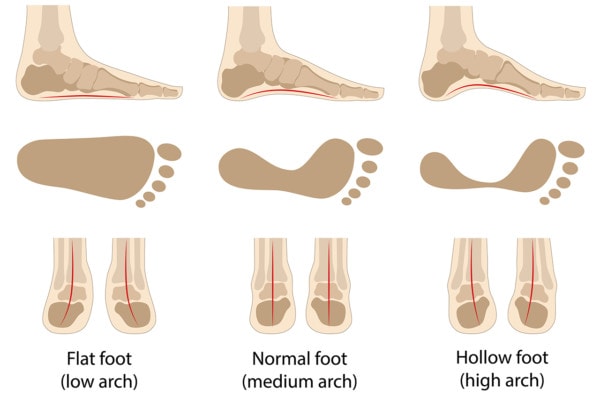Are Your Flat Feet Causing Your Knee Pain?

Olga Bolbot/Shutterstock
The Framingham study group, best known for it’s large heart health study, is turning out to be a treasure trove of orthopedic data as well. This is the group that figured out that knee meniscus tears are as common and about as significant in middle aged and elderly people as grey hair. Now they’ve taken a look at the relationship between the position of the foot/ankle and pain in the rest of the leg.
They studied thousands of people with flat and high arched feet as well as those with a neutral foot/ankle versus those who pronated or supinated. What did they find? A flat feet knee pain relationship. High arches weren’t associated with knee pain, but were associated with ankle pain. Having a pronated or supinated foot didn’t seem to impact the knee or other areas.
How does this compare to other studies I’ve blogged? This study is consistent with another large study in 2011 which showed the same relationship between flat feet and knee pain. However, a much smaller Danish study did find a link in younger people (high school age) between foot pronation and knee cap pain.
The upshot? These Framingham data sets are so large that when they publish a study showing a link between x and y, people take note. So when they say that your flat feet may be causing your knee pain, you should at least consider it. How would this work? The arch is a key shock absorbing structure, so perhaps loss of the arch leads to more shock being transmitted to the knee? There may also be nerve related mechanisms as I’ve blogged before. While this isn’t the final word on this topic, it’s a convincing salvo in how your body is connected. In addition, oftentimes to understand why you hurt in a certain area you have to look at the function of the whole. If you want to learn more on these topics, take some time to read our practice’s e-book, Orthopedics 2.0.

NOTE: This blog post provides general information to help the reader better understand regenerative medicine, musculoskeletal health, and related subjects. All content provided in this blog, website, or any linked materials, including text, graphics, images, patient profiles, outcomes, and information, are not intended and should not be considered or used as a substitute for medical advice, diagnosis, or treatment. Please always consult with a professional and certified healthcare provider to discuss if a treatment is right for you.
